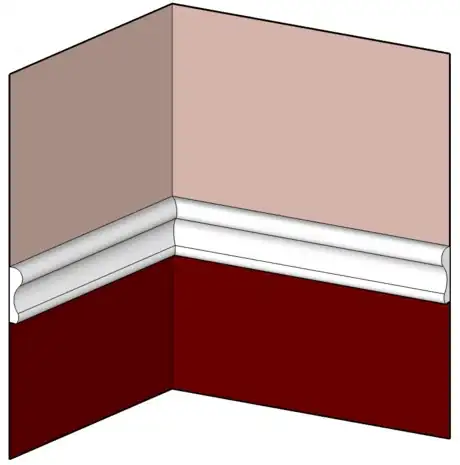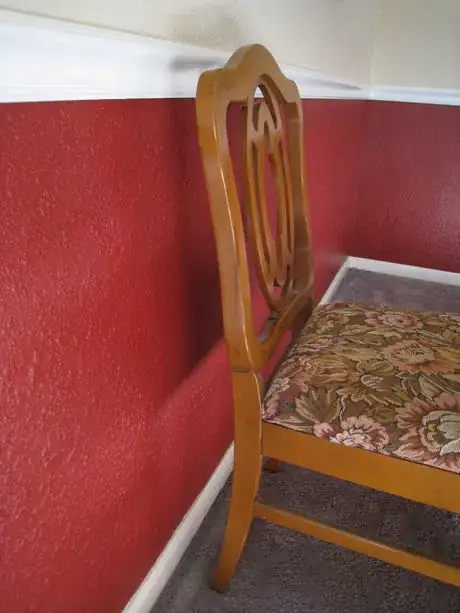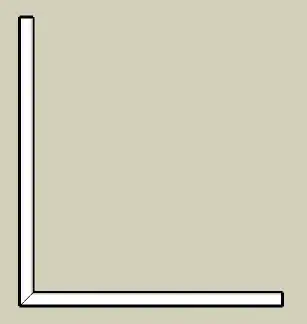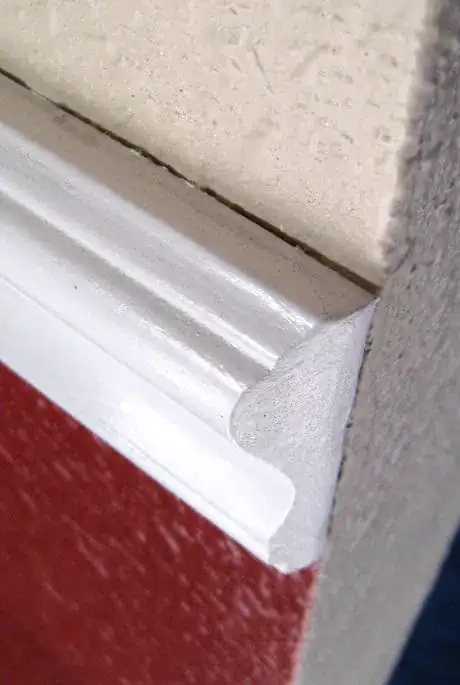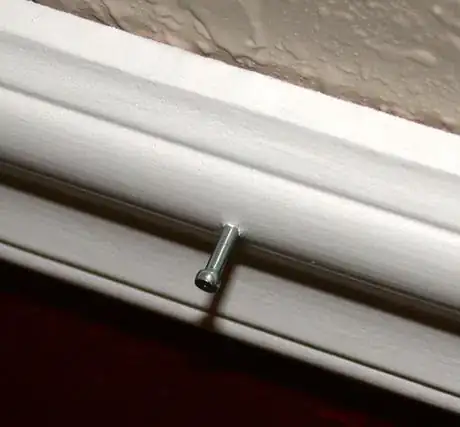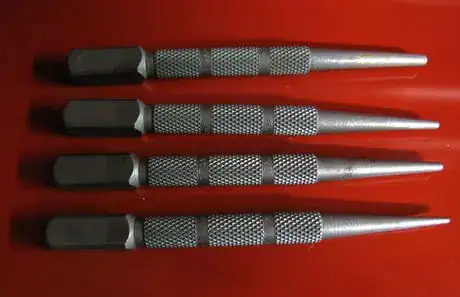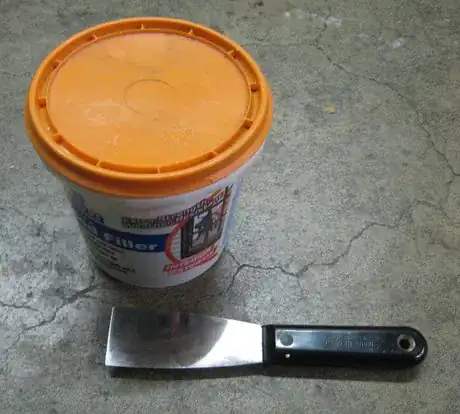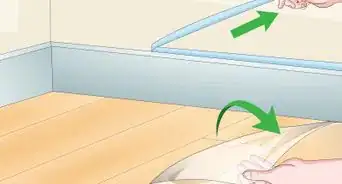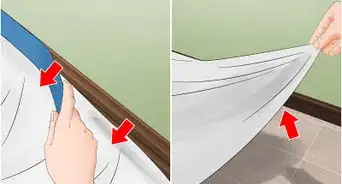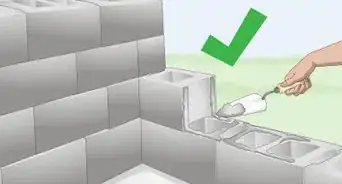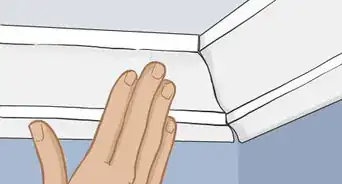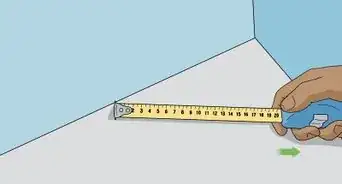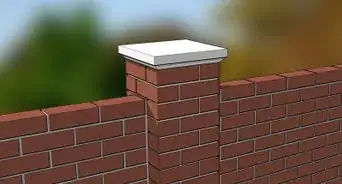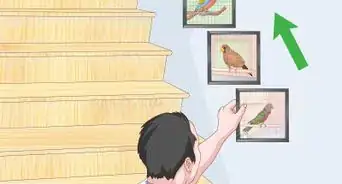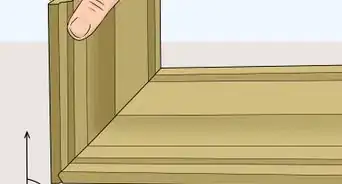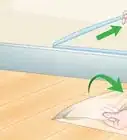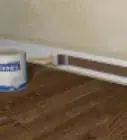wikiHow is a “wiki,” similar to Wikipedia, which means that many of our articles are co-written by multiple authors. To create this article, 15 people, some anonymous, worked to edit and improve it over time.
There are 7 references cited in this article, which can be found at the bottom of the page.
wikiHow marks an article as reader-approved once it receives enough positive feedback. In this case, 90% of readers who voted found the article helpful, earning it our reader-approved status.
This article has been viewed 395,826 times.
Learn more...
Installing a chair rail is a project that you can do yourself with a few simple tools. The original purpose of a chair rail was to guard the wall against damage the backs of errant chairs, but a chair rail can also lend definition and elegance to a space.
Steps
-
1Select appropriate molding to be your chair rail. It can be narrow or wide, depending upon the style you wish to add to the room, but it should be appropriate to go in the middle of the wall; it should lie relatively flat against the wall as well.
-
2Determine the height of your chair rail. You can place a chalk line or strip of masking tape on the wall to help visualize the height while you decide. It will probably be somewhere between 30 and 36 inches (75-90cm) high, though some go higher for dramatic effect.[1] Here are other factors to consider:
- The height of your chairs. Whether or not you are installing the chair rail to prevent damage to the wall, compare its height to your furnishings. It will help achieve a unified look.
- Windows in the room. Will you break the chair rail for windows, or position the chair rail below the windows?
- The height of any paneling that will go above or below the chair rail. If the chair rail will mark the top edge of wainscoting, for instance, simply follow the top edge of that material.
Advertisement -
3Measure and cut any miters for the chair rail, especially if you are turning any corners that are not 90º. If you have such a corner, look for an angle measuring device at your hardware store. Measure the angle, divide by two, and cut the chair rail on each side of the corner to the half-angle measurement.[2]
-
4Measure the length of the chair rail carefully. Miter corners, especially interior corners first, then measure at the height where the chair rail goes. Walls are not always exactly plumb or square. If necessary, miter the corners at the opposite ends. Regardless of whether the ends are mitered for interior or exterior corners, or not mitered at all, the back of the chair rail should be as long as the segment of wall against which it will rest.[3]
-
5Paint or finish the molding. It is easier to finish the molding with it before it goes on the wall. Lay it on a drop cloth or newspapers or across a pair of sawhorses, and finish it to match other molding in your home.
-
6Paint, paper, or panel the wall behind where the chair rail will go. Again, this is simpler before the rail is installed. A simple way to define a space or change the appearance of a room is to paint or paper a different color or design above and below the chair rail.
-
7Locate the studs in the wall and mark them with a pencil or bits of masking tape.[4]
-
8Measure up from the floor and/or use a level to mark the chair rail height at each end of each piece.
-
9Have an assistant help hold the chair rail at the marked height.[5]
-
10Drive finishing nails through the chair rail all the way into the studs. Take care not to hit the molding with the hammer, as it will mark.[6]
-
11Use a nail set to recess the nails slightly into the molding, so that the heads are inset.
-
12Putty over the nails. If you like, caulk the joints where the ends of the chair rail segments meet.[7]
-
13Touch up the paint or finish anywhere you have added putty or caulk.[8]
Community Q&A
-
QuestionHow do I finish an open end?
 Community AnswerYou miter it like it's an outside corner and then insert a tiny, oppositely mitered piece to fill in that miter, so the carving wraps around. You might find this practice on your windowsill skirts. It looks sharp and is really the only right way to do it.
Community AnswerYou miter it like it's an outside corner and then insert a tiny, oppositely mitered piece to fill in that miter, so the carving wraps around. You might find this practice on your windowsill skirts. It looks sharp and is really the only right way to do it. -
QuestionHow do I miter an outside corner that is not 45 degrees?
 Community AnswerTrial and error with scraps. Or, fill-in the wall's corner in that area to get it to a proper 45 degrees.
Community AnswerTrial and error with scraps. Or, fill-in the wall's corner in that area to get it to a proper 45 degrees. -
QuestionWhat if the wood bows out?
 Community AnswerThen, you cut it too long and need to cut an end a touch shorter. The piece should hold itself very close to flat in-place and keep the joints closed, but anything more and especially that forces itself out is just too long and could pop itself loose when relative humidity rises in the future.
Community AnswerThen, you cut it too long and need to cut an end a touch shorter. The piece should hold itself very close to flat in-place and keep the joints closed, but anything more and especially that forces itself out is just too long and could pop itself loose when relative humidity rises in the future.
Warnings
- Make sure you know what you're doing. Hiring an expensive contractor can be a good idea if it means the difference between a small bill (for them) or a large bill from the hospital!⧼thumbs_response⧽
- Use paint and varnish with plenty of ventilation and according to all package instructions.⧼thumbs_response⧽
- Use saws safely.[9]⧼thumbs_response⧽
- Stud finders can find other things in the wall, such as water pipes. Most construction places the studs at a standard, regular intervals. (Usually 16" to 24" apart) Measure and be careful.⧼thumbs_response⧽
Things You'll Need
- Suitable molding
- Finishing nails at least long enough to go through both the molding and the drywall.
- Hammer
- Nail set
- Putty
- Caulk (optional)
- Sandpaper
- Miter saw or wood saw and miter box
- Angle measuring device
- Stud finder
- Paint or finish
- A level
- A tape measure
- An assistant
References
- ↑ https://www.bobvila.com/articles/chair-rail-height/
- ↑ https://www.youtube.com/watch?v=yYa3-m5vFIw
- ↑ https://www.bobvila.com/articles/chair-rail-height/
- ↑ https://www.bobvila.com/articles/how-to-use-a-stud-finder/
- ↑ https://www.apinchofjoy.com/2013/05/how-to-install-a-chair-rail/
- ↑ https://todayshomeowner.com/video/how-to-install-chair-rail-molding/
- ↑ https://todayshomeowner.com/video/how-to-install-chair-rail-molding/
- ↑ https://www.artofmanliness.com/articles/basics-finishing-wood/
- ↑ https://www.ccohs.ca/oshanswers/safety_haz/hand_tools/handsaw.html
